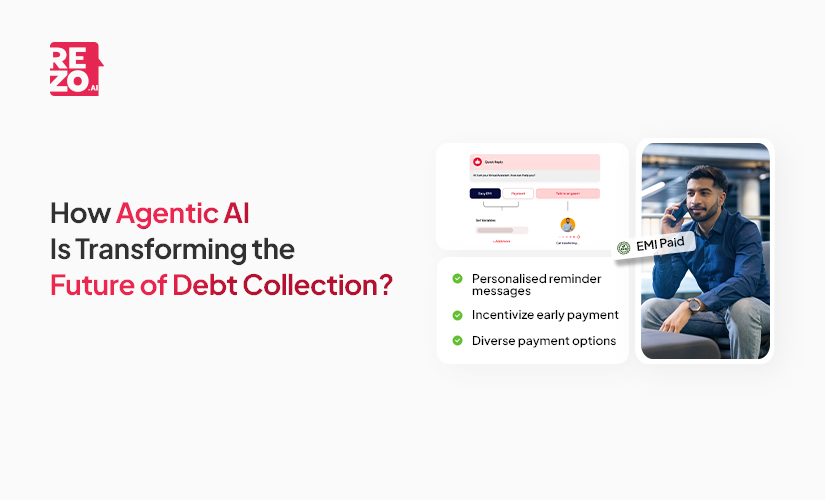
Speech Recognition in Artificial Intelligence

Speech Recognition in Artificial Intelligence


Have you ever wondered how your phone understands when you ask it for directions? Or how your smart speaker plays your favorite song when you request it?
That’s speech recognition technology at work, one of the biggest breakthroughs in artificial intelligence.
Speech recognition is the ability of machines to understand spoken words. It converts speech into text that a computer can understand and act on. Advanced speech recognition software leverages AI and machine learning to analyze and interpret speech based on grammar, structure, and syntax.
In the early days, speech recognition systems could only understand a few basic words spoken very clearly. Now, they can understand full conversations in many languages, even with different accents and some background noise.
In this blog, we’ll explore how speech recognition actually works, where you might already be using it without realizing it, the challenges that still need attention, and what exciting new developments are just around the corner.
Whether you’re a business owner looking to implement AI voice technology, a tech enthusiast, or simply curious about the voice assistants you use every day, this blog will help you understand this fascinating technology in simple, clear terms.
What is Speech Recognition in Artificial Intelligence?
Speech recognition in artificial intelligence is also known as automatic speech recognition (ASR). It converts spoken language into written text to understand and respond.
Automatic Speech recognition works by analyzing audio input and applying complex algorithms and cutting-edge technologies like machine learning (ML) and neural networks to recognize and interpret spoken words. Phonetics and linguistics are the foundations of this technology.
- Phonetics provides the fundamental knowledge of speech sounds: how they are produced, their acoustic characteristics, and how they vary. This is essential for the initial stages of audio analysis and acoustic modeling. Without a solid understanding of phonetics, the system would struggle to accurately identify the basic building blocks of speech.
- Linguistics provides the understanding of language structure and meaning: grammar, syntax, semantics, and pragmatics. This knowledge is crucial for the later stages of interpretation, particularly in language modeling and ensuring that the recognized sequence of phonemes forms meaningful and grammatically correct words and sentences within a given context.
Speech recognition systems enable users to communicate with devices, applications, and services using their voice rather than traditional input methods like typing or clicking. Businesses develop these programs and technologies to integrate them into different hardware devices and identify speech.
Speech recognition software has applications across various industries, enhancing accuracy and effectiveness through AI, and is particularly relevant in sectors like banking and voice-assisted technologies.
How Does Speech Recognition Work?

Speech recognition Artificial Intelligence is a complex process of intricate algorithms to convert spoken language into written text. The process of speech recognition takes place in the following stages:
Sound Capturing
Speech recognition in artificial intelligence begins with capturing audio input using microphones or other audio recording devices.
Sound Analysis
Sound analysis is also known as acoustic analysis in speech recognition AI. Sound analysis involves utilizing AI techniques to interpret audio data by extracting valuable information from signals such as speech, music, or environmental sounds. In this stage, the computer converts the captured sound into a digital format by converting continuous sound waves into discrete data points, which can then be processed.
Feature Extraction
The extraction process involves extracting various acoustic features from the digital audio data. These features include characteristics like pitches, tones, and lengths of the sounds and spectral patterns. These features help represent the distinct sound elements present in the spoken words.
Acoustic Modeling
It involves training a machine learning model to recognize patterns in the extracted acoustic features and the individual sounds that make up words, called phonemes. It tries to match the patterns it sees with these known phonemes. Simply, the computer compares the extracted sounds to the words people say.
Language Modeling
Using language models in speech recognition in artificial intelligence, the computer makes educated predictions about what words you might be saying based on the context of the conversation
Decoding
The speech recognition system predicts what words you speak based on the patterns it matches and the language knowledge it has. It considers all possible options and chooses the most likely ones. Decoding involves searching through a vast set of possible word combinations to find the one that best matches the audio features and context.
Output Generation
The final outcome of the speech recognition process is a text transcription of the spoken audio. The recognized text is generated based on the decoded word sequence.
Also Read: How AI Voice Bots are Helping the Telecommunications Industry in Dormant Reactivation
Challenges in Speech Recognition

Speech recognition in artificial intelligence has made significant advancements. However, there are several challenges in ASR that impact the accuracy and usability of the technology. Some of the challenges in speech recognition AI are as follows:
Accents and Dialects
Different accents and dialects can significantly affect the accuracy of speech recognition systems. Variations in pronunciation, intonation, and speech patterns make it challenging for systems to transcribe spoken words accurately.
Background Noise and Ambient Conditions
Ambient noise, such as background conversations, machinery, or street noise, can interfere with the clarity of spoken input, making it difficult for systems to capture and transcribe the intended words accurately.
Context Understanding
Speech recognition systems struggle to understand and interpret the context of spoken language accurately. Contextual understanding is crucial for correctly transcribing ambiguous phrases and understanding the meaning behind words.
Vocabulary and Out-of-Vocabulary Words
Recognizing uncommon words, industry-specific jargon, or newly coined terms can be challenging for AI speech recognition, which has yet to be trained on these terms.
Lack of Training Data for Specific Use Cases
Developing accurate speech recognition in artificial intelligence requires vast training data. Obtaining sufficient training data can be challenging in specialized domains or languages with limited resources.
What are the Applications of Speech Recognition?

Speech recognition in artificial intelligence has the following applications:
- Voice Assistants: Virtual helpers like Siri, Google Assistant, and Alexa respond to voice commands, schedule tasks, and answer queries.
- Transcription Services: ASR aids in converting spoken content into written documents, from interviews to lectures. Professionals can use speech recognition to dictate reports, documents, emails, and notes, speeding up the process of content creation.
- Accessibility: Speech recognition technology empowers individuals with disabilities to interact with computers and perform tasks using their voice.
- Automotive Interfaces: Voice commands enable drivers to control various functions while keeping their hands on the wheel.
- E-Commerce: Voice-powered online shopping enables customers to search for products, add items to their cart, and complete purchases using their voice.
- Language Translation: Speech recognition in AI can help you translate and converse with people with different languages and accents.
- E-Learning: Speech recognition can be incorporated into e-learning platforms, allowing employees to use their voice to interact with training materials and assessments.
Voice recognition, on the other hand, identifies the unique characteristics of a speaker's voice for security and access purposes. It enhances user interactions with devices and is increasingly adopted across various industries to improve customer experiences through AI integration.
To understand how voice-AI is revolutionizing automotive customer service, enhancing interactions, and boosting efficiency, check out this resource on Transforming the Automobile BDC with Voice-AI.
Also Read: How Voice-AI Is Transforming The Automobile BDC?
Use Cases of Speech Recognition in Businesses
Speech recognition technology has found numerous applications in the business world, offering efficiency, convenience, and improved customer interactions. Here are some key applications of speech recognition in business:
Automated Customer Support
Speech recognition-powered IVR (Interactive Voice Response) systems allow customers to interact with automated menus using their voice, efficiently routing calls to appropriate departments.
- Automated Customer Support: Speech recognition-powered IVR (Interactive Voice Response) systems allow customers to interact with automated menus using their voice, efficiently routing calls to appropriate departments.
- Virtual Agents: AI-powered virtual agents use speech recognition to understand and respond to customer inquiries, offering solutions and information 24/7 without human intervention.
- Call Analytics: Businesses can analyse customer interactions in call centers to identify trends, customer sentiments, and areas for improvement in customer service.
- Voice Biometrics: Speech recognition in artificial intelligence can be used to create voiceprints for user authentication, adding an extra layer of security to systems and services.
- Multilingual Support: Speech recognition can aid in real-time translation during global business communications, breaking down language barriers.
- Speech Analytics: Analysing recorded customer calls using AI speech recognition can help extract valuable insights about customer preferences, pain points, and market trends.
- Customer Service: Call centers utilize speech recognition AI for efficient call routing and automated assistance.
Incorporate Speech recognition in artificial intelligence with Rezo.ai

Leveraging cutting-edge AI speech recognition technology with Rezo.ai empowers businesses to optimize their customer service, drive efficiency, and ultimately craft meaningful connections that drive success. Rezo's speech recognition in artificial intelligence not only converts spoken words into written text but also delves deeper, analyzing the nuances within the conversation.
Rezo's Engage AI processes audio data by converting speech to text in real-time, overcoming challenges like background noise, accent, inconsistent quality, and dual-channel separation with a reduced word error rate. Let's explore how Rezo's Engage AI is poised to reshape the business landscape:
- Sentiment Analysis: Rezo's Engage AI captures the underlying sentiment in conversations by analysing the tone. Businesses can gauge customer satisfaction, detect potential issues, and tailor responses accordingly.
- Intelligent Routing: Through advanced algorithms, Rezo's voice agents analyse the tone of the customer. When a customer is unsatisfied and needs further assistance, EngageAI intelligently routes calls and inquiries to the most suitable agent.
- Appropriate Responses: Powered by machine learning, the platform suggests appropriate responses based on the analysis of the conversation. This not only saves human agent workload but also ensures consistent and accurate communication with customers.
- Training Agents: Rezo's Analyse AI isn't just a tool; it's a training ground for agents. By providing real-time insights into customer interactions, agents can refine their communication skills and enhance their ability to meet customer expectations effectively.
- Elevated Customer Experience: With the power of Rezo.ai, businesses can provide an elevated customer experience. From quicker problem resolution to personalized engagement, every interaction becomes an opportunity to leave a positive impact round the clock.
- Streamlined Processes: By automating the transcription process, Rezo's Engage AI frees up valuable time for agents and reduces the chance of errors associated with manual transcription.
Quick Reads: Your Go-To AI Glossary: Simplifying the Complex World of Artificial Intelligence
Conclusion
Speech recognition is revolutionising business in the field of artificial intelligence by enabling machines to comprehend and intelligently respond to human speech. Automatic Speech Recognition (ASR) is a technology that converts spoken language into text by utilising advanced algorithms and technologies such as machine learning and neural networks to detect speech. The applications of ASR are numerous, ranging from voice assistants to call analytics.
Rezo.ai’s Engage AI expands on this by providing sentiment analysis, intelligent routing, and better customer experiences. Request a demo to discover the full potential of Rezo.ai’s speech recognition technology for your business.
Frequently Asked Questions
What are the different types of speech recognition in AI?
Speech recognition in artificial intelligence can be of different types. A few of them are as follows: Automatic Speech Recognition (ASR), Isolated Word Recognition, Continuous Speech Recognition, Speaker-Dependent and Speaker-Independent Recognition, Large Vocabulary Continuous Speech Recognition, Contextual Speech Recognition, and more.
Why is speech recognition important in AI?
Speech recognition is crucial in AI because it enables seamless communication between humans and machines. It empowers devices to understand spoken language and respond appropriately. This technology enhances user experiences, productivity, and accessibility, bridging the gap between human communication and digital interaction.
What is the difference between AI speech recognition and voice recognition?
Speech recognition AI converts spoken language or data into written text, focusing on understanding words and phrases. On the other hand, voice recognition identifies the unique vocal characteristics of an individual for authentication without necessarily understanding the words being spoken.
Frequently Asked Questions (FAQs)

Take the leap towards innovation with Rezo.ai
Get started now














